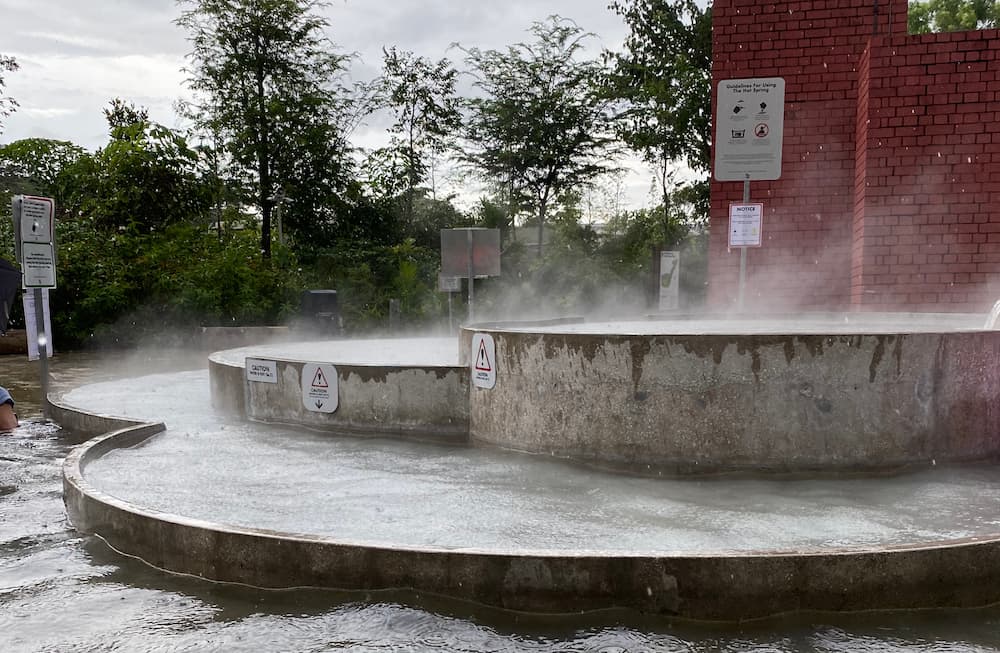
Sembawang Hot Spring Park in Singapore. (Photo: Wikimedia Commons)
A S$16 million two-year nationwide study to assess Singapore’s geothermal power potential expected to commence in the second half of 2024, according to the Energy Market Authority (EMA).
Islandwide study would be led by Surbana Jurong
As the country explores ways to "green" its energy mix, preliminary studies have suggested that places like Sembawang and Pulau Tekong may possess potential.
One of these studies was conducted in July 2023 by Nanyang Technological University (NTU), infrastructural consulting firm Surbana Jurong, and the research platform Tumcreate. It found that a site near the Sembawang hot spring could have temperatures of up to 200°C, which is suitable for power generation, at depths ranging from 4km to 5km.
In Setpember 2023, EMA called for proposals to conduct a non-invasive, islandwide, study to evaluate Singapore’s geothermal potential at depths of up to 10km. The proposed survey regions may include mainland Singapore, territorial waters and offshore islands. The tender was awarded this month to Surbana Jurong for S$16 million.
According to EMA, the company’s proposed survey areas mainly encompass mainland Singapore, and it is estimated to start in the second half of the year, subject to approvals from the relevant authorities.
Pulau Tekong, Tuas area may also have geothermal potential
Alessandro Romagnoli, Professor from NTU, who led the 2023 geothermal study in Sembawang, said that other regions worth studying include Pulau Tekong, western Singapore such as the Tuas area, and eastern Singapore.
Pulau Tekong is home to a known hot spring in its Unum region, located in the island's northern part. Meanwhile, the western side of mainland features thick sedimentary layers that can trap heat from deep underground sources.
Eastern part features a thin sedimentary layer over a potentially hot granitic basement, although confirming that a geothermal resource exists will need further exploration.
Romagnoli and his team have drilled around 1.7km at the site in Sembawang, collecting rock samples and measuring the temperature at different depths. This data collection will contribute to creating an underground heat map for the area.
.jpg)
Sembawang Hot Spring Park.(Photo: National Parks Board)
Geothermal study powered by new tech
Meanwhile, the NTU team will continue drilling deeper at its Sembawang site, while extracting data that can be used to further validate the non-invasive geophysical survey that Surbana Jurong will be conducting.
In October 2021, EMA announced the exploration of the viability of utilizing geothermal systems in Singapore, spurred by advancements in technology.
One example involves the use of closed-loop heat extraction systems, which require a far smaller surface area per unit of power generated compared to other types of power plants. This works by installing pipes underground in a loop, which would then transport fluids that transfer heat from the hot granite layers to the surface. There, the heat can be used to generate electricity.
In exploring Singapore's geothermal potential without invasive methods, Romagnoli suggested conducting surveys to gather gravity and magnetic data across a broad area to identify key regions. This approach can be supplemented with seismic surveys, utilizing sound waves to visualize underground rock formations.



